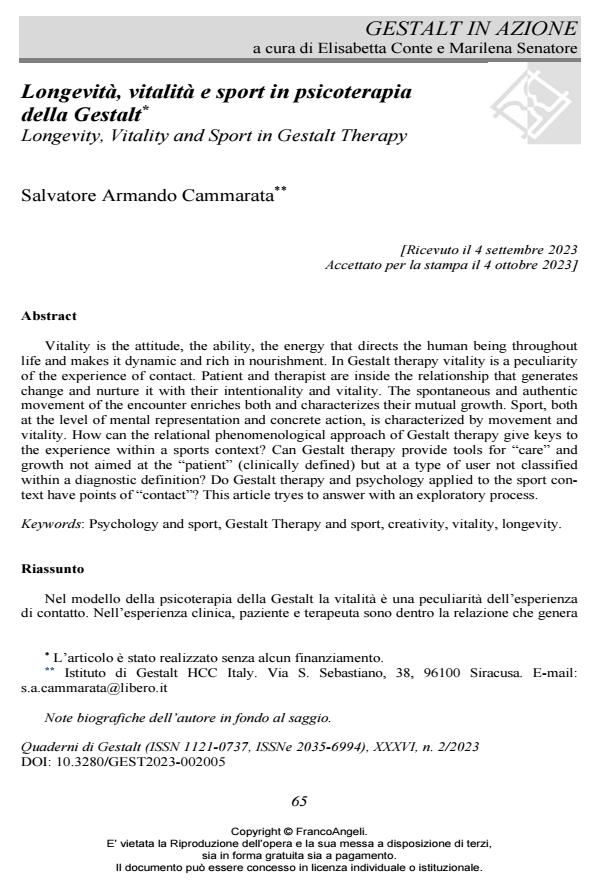Longevity, Vitality and Sport in Gestalt Therapy
Journal title QUADERNI DI GESTALT
Author/s Salvatore Armando Cammarata
Publishing Year 2024 Issue 2023/2
Language Italian Pages 14 P. 65-78 File size 178 KB
DOI 10.3280/GEST2023-002005
DOI is like a bar code for intellectual property: to have more infomation
click here
Below, you can see the article first page
If you want to buy this article in PDF format, you can do it, following the instructions to buy download credits

FrancoAngeli is member of Publishers International Linking Association, Inc (PILA), a not-for-profit association which run the CrossRef service enabling links to and from online scholarly content.
Vitality is the attitude, the ability, the energy that directs the human being throughout life and makes it dynamic and rich in nourishment. In Gestalt therapy vitality is a peculi-arity of the experience of contact. Patient and therapist are inside the relationship that generates change and nurture it with their intentionality and vitality. The spontaneous and authentic movement of the encounter enriches both and characterizes their mutual growth. Sport, both at the level of mental representation and concrete action, is character-ized by movement and vitality. How can the relational phenomenological approach of Gestalt therapy give keys to the experience within a sports context? Can Gestalt therapy provide tools for “care” and growth not aimed at the “patient” (clinically defined) but at a type of user not classified within a diagnostic definition? Do Gestalt therapy and psy-chology applied to the sport context have points of “contact”? This article tryes to an-swer with an exploratory process.
Keywords: Psychology and sport, Gestalt Therapy and sport, creativity, vitality, longevity.
Salvatore Armando Cammarata, Longevità, vitalità e sport in psicoterapia della Gestalt in "QUADERNI DI GESTALT" 2/2023, pp 65-78, DOI: 10.3280/GEST2023-002005